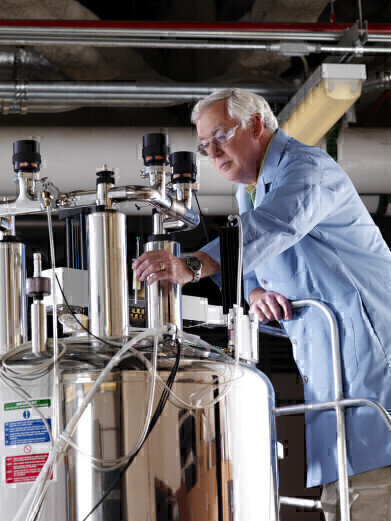News & Views
NMR Basics 101 — What is Shimming?
Aug 28 2014
A shim is a device used to adjust the homogeneity of a magnetic field. Shimming is a process that is carried out to correct any inhomogeneities in the applied magnetic field during a nuclear magnetic resonance (NMR) experiment.
The inhomogeneities can come from two main sources:
- Variation in the applied field due to imperfections in the main magnet, or arising from the main magnet
- Deviations in the main magnetic field due to the presence of the sample and probe in the field
Why Shim?
In NMR spectroscopy, the analyst tries to achieve the best possible resolution, with the narrowest lines in the spectra. The signal from a sample is relatively small, so the analyst needs to use all the techniques available to increase the signal-to-noise ratio; increasing the signal output and reducing the noise in the system helps to achieve this aim. Tuning the probe reduces the noise in the system.
To increase the signal arriving at the detector, a simple technique is to increase the output signal from the sample. Increasing the number of nuclei having the same spin frequency, the Larmor frequency, will increase the signal generated by the sample. The nuclei spin at a frequency determined by the magnetic field; consequently, having a uniform magnetic field at the sample will mean more of the nuclei have the same spin frequency.
To obtain a high-resolution spectrum, a magnetic field must be homogeneous to 1 part in 109 across the sample. This allows a variation of 0.3 Hz at 300 MHz, a typical spin frequency in proton NMR. A magnet producing the main field used in NMR might only be homogeneous to 1 part in 106. Shimming increases the uniformity of the magnetic field.
Shimming
In the mid nineteenth century, the word shim was used to mean a thin wedge, inserted to make parts fit together or align. When the original NMR spectrometers were developed, the magnetic field was generated using iron magnets. To make the field more homogeneous, metal shims were used to reposition the magnets, and the process was known as shimming.
Nowadays, with modern electromagnets or superconducting magnets, shims are no longer pushed into place. But the terms have stuck, and the process of making small adjustments to the magnetic field is still known as shimming.
How to Shim
In modern NMR spectrometers, shimming is done using small electrical circuits having some resistance. When current flows in a wire, a magnetic field is generated. So using these shimming circuits means small magnetic fields can be generated and used to adjust the main applied field and increase its homogeneity.
The shimming coils can be in the probe, as it is the field at the sample that needs to be smooth. The coils can adjust the magnetic field in several directions. Typically, an analyst will have to adjust the field in three dimensions whilst measuring a reference peak.
Ease of shimming can be a consideration in choosing the NMR spectrophotometer, as discussed in: Report on the use of Benchtop NMR system at the Rochester Institute of Technology.
Image Source
Digital Edition
Lab Asia 31.2 April 2024
April 2024
In This Edition Chromatography Articles - Approaches to troubleshooting an SPE method for the analysis of oligonucleotides (pt i) - High-precision liquid flow processes demand full fluidic c...
View all digital editions
Events
Apr 22 2024 Marrakech, Morroco
Making Pharmaceuticals Exhibition & Conference
Apr 23 2024 Coventry, UK
Apr 23 2024 Kintex, South Korea
Apr 23 2024 Seoul, South Korea
Apr 24 2024 Jakarta, Indonesia







.jpg)










